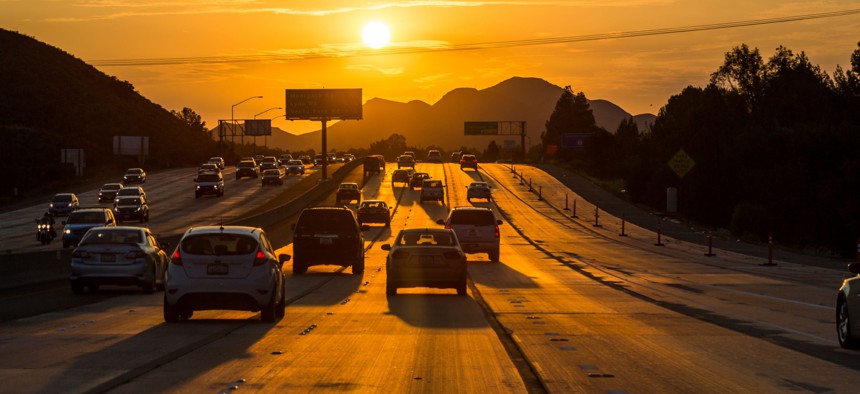Next Generation of Transportation Disruption Will Have ‘Impacts That We Can’t Fully Anticipate’

U.S. 101 in Sherman Oaks, California Shutterstock

Connecting state and local government leaders
“I think our roles as infrastructure providers are going to change significantly,” the Utah Department of Transportation’s director said at an Infrastructure Week event in the nation’s capital.
WASHINGTON — The advent of the internal combustion engine, or steam powered vessels replacing sailing ships. Advancements with technologies like self-driving cars and infrastructure sensors are poised to be on par with these kinds of revolutionary changes in the movement of people and goods, the U.S. Department of Transportation’s Kenneth Leonard believes.
“There’s a long history of disruptive technologies in the transportation sector,” Leonard, director of the Transportation Department’s Intelligent Transportation Systems Joint Program Office, said Monday during a panel discussion on Capitol Hill.
He added: “I look at the work that we’re involved in now, with connected and automated vehicles, and smart cities, as that next generation of transportation disruption, and it’s going to have some impacts that we can't fully anticipate."
Organized by the Eno Center for Transportation, a think-tank based in Washington, D.C., Monday’s panel was one of dozens of events scheduled to take place around the country in the coming days as part of Infrastructure Week. The discussion was focused on how disruptive technologies are affecting the way infrastructure is built and operated.
This is a topic of special significance to state and local governments, given that many of them will likely make decisions in the coming years about how to invest in, construct and manage, infrastructure that can accommodate connected vehicles, and other new technologies.
Connected vehicle technology can allow trucks and cars to “talk” to one another, and infrastructure, by exchanging data in near-real-time about things such as a vehicle’s braking, speed, and location.
Proponents say it can help improve both safety and efficiency on roadways.
“I think our roles as infrastructure providers are going to change significantly,” said Carlos Braceras, director of the Utah Department of Transportation, who was on the panel.
As technology evolves, he stressed the importance of transportation agencies giving employees room to innovate and experiment. “That’s one of the changes we’re going to have to make,” he said, “is to embrace that ability to take calculated risks.”
“That’s a pretty tough thing to do,” Braceras added. “We're always worried about that headline of how we screwed up.”
Brian Pickerall, a vice president with Booz Allen Hamilton, Inc. also spoke at the event, and pointed out that, two decades ago, conversations about highway infrastructure typically centered on things like asphalt, signage and lighting.
“Today, we're talking about cameras and data and sensors that didn’t even exist back then,” he said.
There are risks implicit with the data on which many of the emerging transportation technologies will depend. “You could have a massive attack against every car on the George Washington Bridge,” said David Strickland, a lawyer with Venable LLP, as he offered up one hypothetical worst-case scenario involving connected vehicles.
Strickland, a previous administrator of the National Highway Traffic Safety Administration, said automakers realize connected vehicles will have a very large “attack surface” for hackers to exploit.
The industry, he noted, is taking steps toward nailing down practices for keeping various types of data private and secure. Strickland also said there is great promise when it comes to the safety gains automated vehicle technology might provide.
“Ninety-four percent of all crashes have an element of human error,” he said.
While automated and connected vehicles have the potential to cut down on crashes, in Strickland’s view, he sees another possible benefit as well. He said these vehicles may also one day provide a new mode of travel for seniors, or people with disabilities.
Recently Strickland was named as counsel to a coalition of five companies interested in supporting fully self-driving vehicles—Ford Motor Co., Volvo Cars, Google and the ridesharing firms Lyft and Uber.
With the level of vehicle automation the group is aiming for, he said, “there is no expectation that a driver will ever have to intervene during the trip.”
RELATED on Route Fifty:
Bill Lucia is a Reporter for Government Executive’s Route Fifty.

NEXT STORY: What agencies need to know when working with a FedRAMP-approved vendor





